On September 4 this year, Google turned 27. Although it’s just been 27 years, the search engine had a big impact on how we live.
Millions of people search for different things every day on Google on their computers, smartphones, and other devices. This search engine also creates multiple opportunities for businesses to reach new customers and clients by using search engine optimization.
So today, we’re sharing the latest Google stats that every marketer needs to know to refine their strategy. These Google stats will show how important this search engine is for customers and why SEO is crucial for the success of your business.
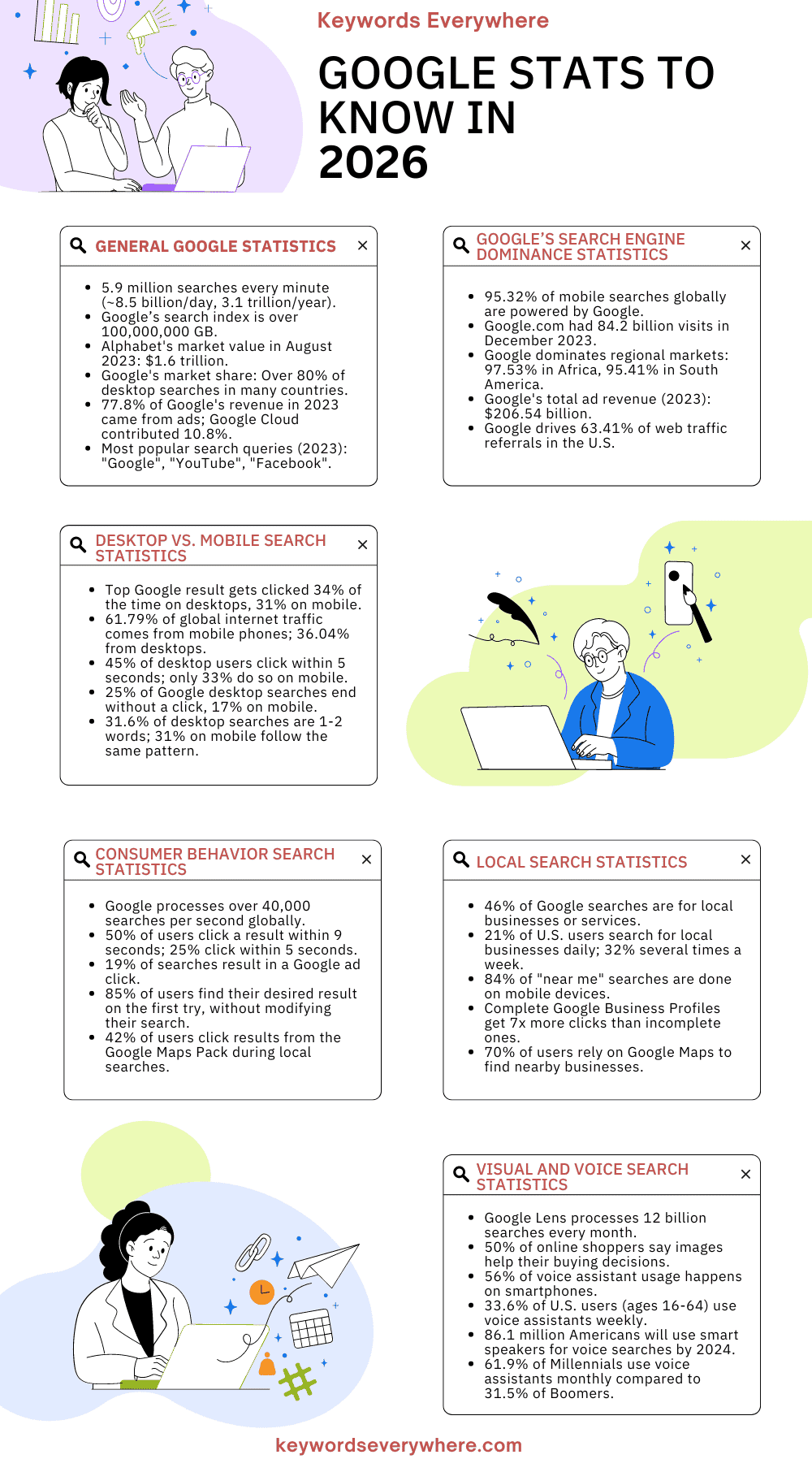
General Google Statistics
For more than twenty years, Google has been the top choice for finding information online, making it easy to access a huge amount of knowledge with just a few clicks.
Google is also the biggest player in the online search world and offers a range of digital products and services, including online ads, cloud computing, and software.
Let’s start exploring some interesting Google stats!
1. Google handles 5.9 million searches every minute. To give you an idea, that’s about 8.5 billion searches every day, or 3.1 trillion searches each year.
2. The search index is over 100,000,000 GB in size. It’s created by Google’s web crawlers, which travel from one webpage to another, keeping track of what they find.
3. As of August 2023, Alphabet, Google’s parent company, was the biggest internet company globally, worth over 1.6 trillion U.S. dollars.
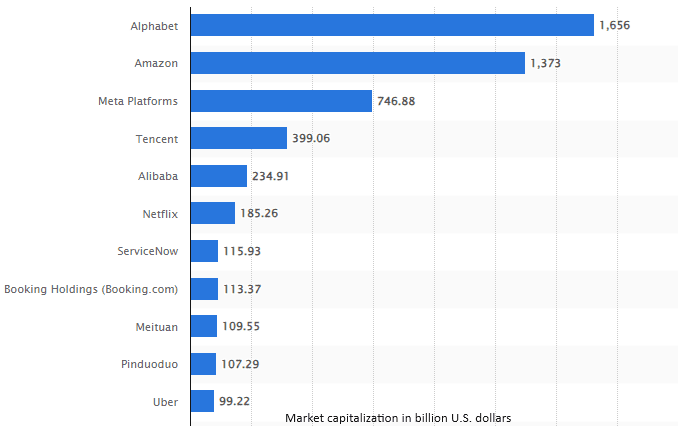
Source
4. Google is a top search engine not just in the U.S., but in many other countries too, making up over 80% of desktop searches in some places. In India, Google has a massive market share of over 92%, far ahead of competitors like Yahoo, Yandex, Bing, and Baidu.
5. In 2023, 77.8% of Google’s revenue came from ads on Google sites and YouTube. Google Cloud contributed 10.8% of the revenue, up from 4.3% in 2018.
6. In 2025, “YouTube” is the top search query on Google. “Facebook” came in second, “WhatsApp Web” was third, and “Translate” was fifth.

Source
7. Google’s Autocomplete feature reduces typing by 25%, saving over 200 years of typing time every day around the world.
8. About 80% of people aged 13–21 use Google more than three times a day, while only 60% of people over 60 search that often.
9. In May 2024, Google Sites, including Search, YouTube, Gmail, Hangouts, and others, were the most visited online properties in the U.S., with over 278 million visitors from mobile and desktop.
10. According to Keywords Everywhere, keywords related to “Google” have a very high search volume, showing that many users are searching for these terms on Google.
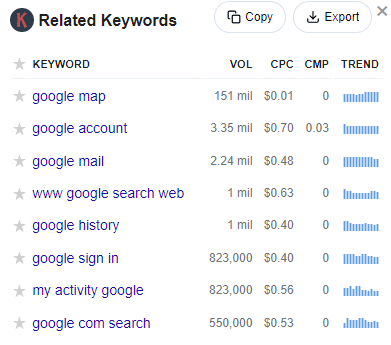
Google’s Search Engine Dominance Statistics
What’s the most valuable thing in the world? It’s people’s attention. As marketers, we’re always trying to capture that attention, often with tight budgets. Google gives you a powerful chance to reach your customers and increase sales.
Check out these Google stats to see how this search engine is leading the market:
11. Unsurprisingly, Google is the most popular search engine globally, with a 95.32% share of mobile searches and 81.95% on desktops.
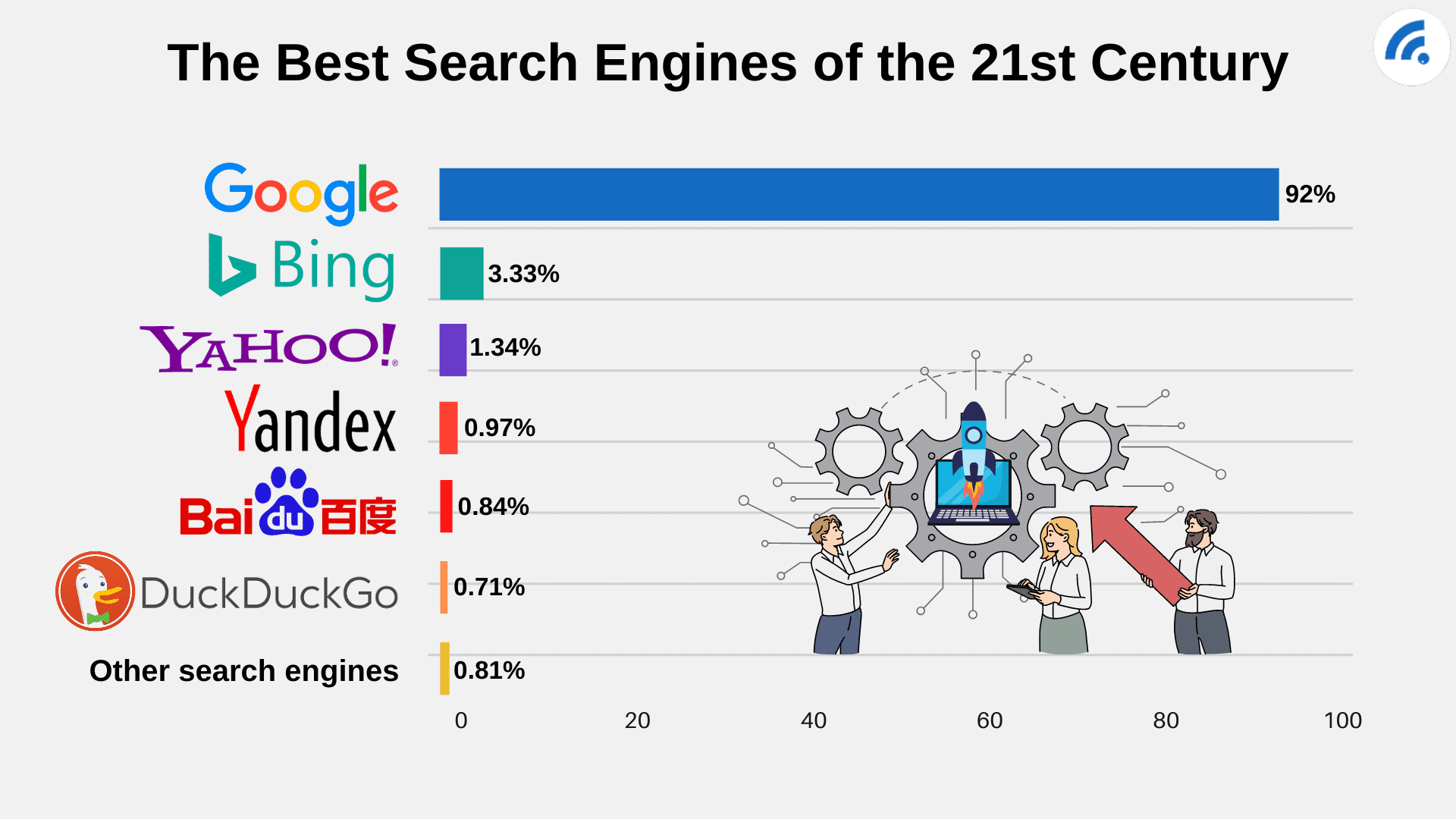
Source
12. In December 2023, Google.com had around 84.2 billion visits, down from 87 billion in October of the same year.
13. In North America, Google holds an 89.08% share of the search engine market. In Europe, it’s 91.91%, in South America, it’s 95.41%, and in Africa, it’s a whopping 97.53%.
14. In 2023, Google websites, including search and YouTube, brought in $206.54 billion in ad revenue. Overall, Google’s total revenue for the year was over $305.6 billion.

Source
15. Google drives 63.41% of all web traffic referrals in the US. Globally, 92.96% of traffic comes from Google Search, Google Images, and Google Maps.
16. Only 49% of Gen Z women use Google as their search engine—many prefer TikTok instead.
Desktop vs. Mobile Search Statistics
Google stats can look different depending on what device people are using. For example, the way people search on their phones might be different from how they use their computers.
Here are some interesting numbers that show how Google performs on various devices so you can get a better idea of what’s happening in each space.
17. When you search on Google, the top result gets clicked 34% of the time on desktops and 31% of the time on mobile devices.
18. Globally, mobile phones are the big winners, driving 61.79% of all internet traffic. Desktops are next, with 36.04%, and tablets make up just 2.17% of the total traffic.
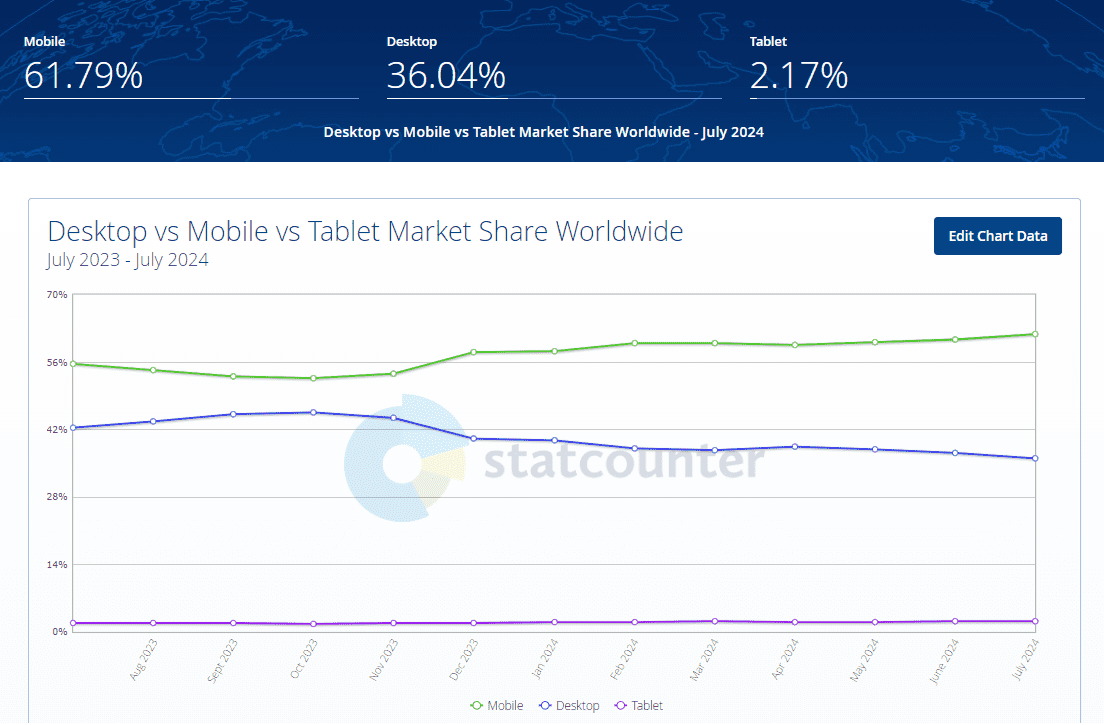
Source
19. In the U.S., mobile traffic makes up 50.84% of web use, while desktops lead with 46.39%. Tablets have a small share at 2.76%.
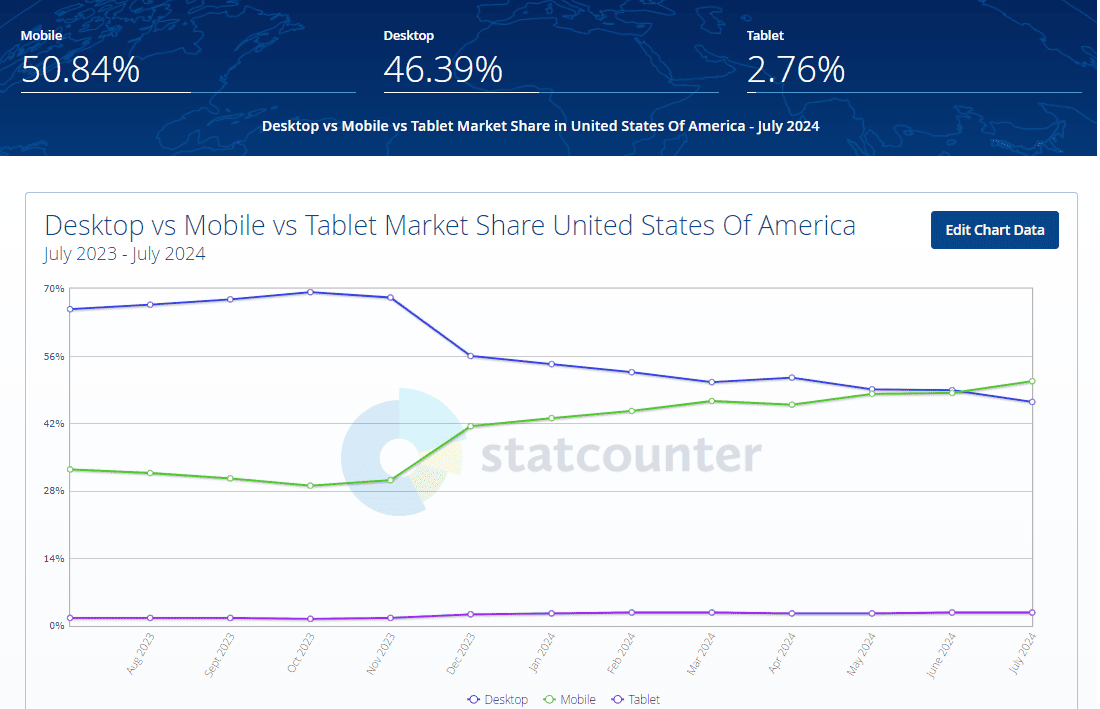
Source
20. According to a Semrush study, 38.2% of Google searches on desktops in the U.S. use three to four words, while 39.9% of searches on mobile devices do the same. Searches with just one or two words make up 31.6% on desktops and 31% on mobiles.
21. When it comes to making decisions, people take a bit longer on mobile. About 45% of desktop users decide what to do next within five seconds of searching. On mobile, that number drops to 33%.
22. Countries like Ireland, Norway, Saudi Arabia, and the UAE are at the top for mobile internet use, with a remarkable 99% penetration rate in each.
23. 25% of Google searches on desktops end without a click, and 17% of searches on mobiles end the same way.
24. 51% of smartphone users have found new companies or products while searching on their phones.
Consumer Behavior Search Statistics
Consumer habits are changing quickly, thanks to new technologies and the upcoming rollout of 5G. This digital shift is transforming how people shop and interact with brands.
Many people turn to Google when they’re thinking about their next purchase, whether they plan to buy online or in a store.
Here are some key Google stats that reveal how users behave on this search engine:
25. When people want to learn something or buy a product, they usually turn to Google. On average, Google handles more than 40,000 searches every second. For businesses, this shows just how crucial it is to have strong SEO and a good spot in search results.
26. Half of Google users click on a result within 9 seconds, and 25% click within just 5 seconds. On average, people take about 14.6 seconds to click on something after searching.
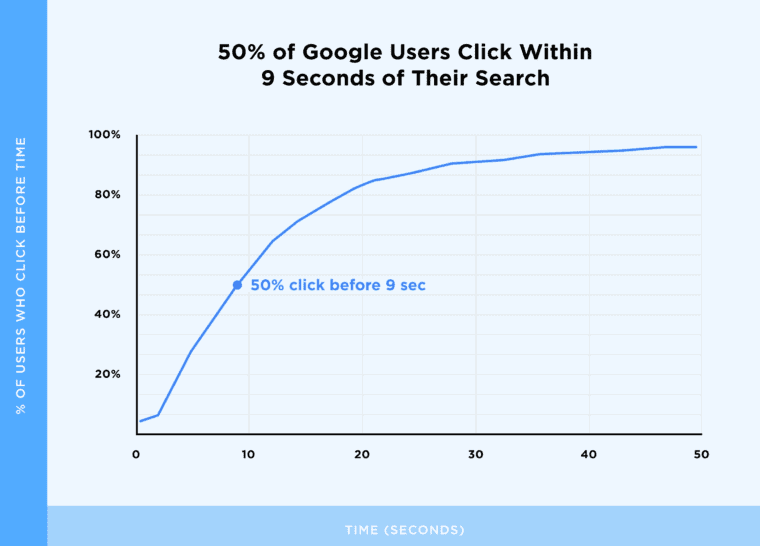
Source
27. Fifteen percent of users change their search terms, while 85% find what they’re looking for with their original query. This means Google usually gives very relevant results, or users are good at picking the right words to start with.
28. Only 17% of users go back to the search results after clicking on a link, and just 5% go back more than once for the same search.
29. Most people (59%) only visit one page during their search, while only 6% need to look at four or more pages to find their answer.
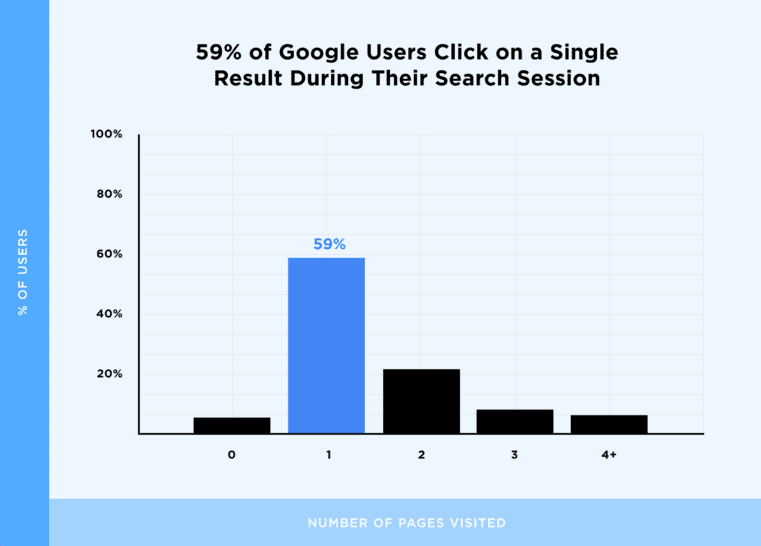
Source
30. Depending on the search, 19% of people click on a Google Ad during their search.
31. For local searches, 42% of people click on results that appear in the Google Maps Pack.
32. On average, a search session lasts 76 seconds, and half of them are completed within 53 seconds.
Local Google Search Statistics
In today’s world, having a local SEO strategy is a must for any business that serves a specific area. More people than ever are using Google to search for things nearby.
Let’s dive into some Google stats to see what people are looking for in different regions.
33. When people search on Google, 46% are looking for local businesses. So, if you don’t have a local SEO strategy, you might miss out on these potential customers.
34. In the US, 21% of people search for a local business online every day, and 32% do it several times a week.
35. Most “near me” searches—84%—are done on mobile phones. That’s why it’s crucial to make sure your Google Business Profile and website are mobile-friendly.
36. Fully completed Google Listings get 7 times more clicks than those that are incomplete. But just filling in the basics isn’t enough—you also need to optimize your listings to really stand out.
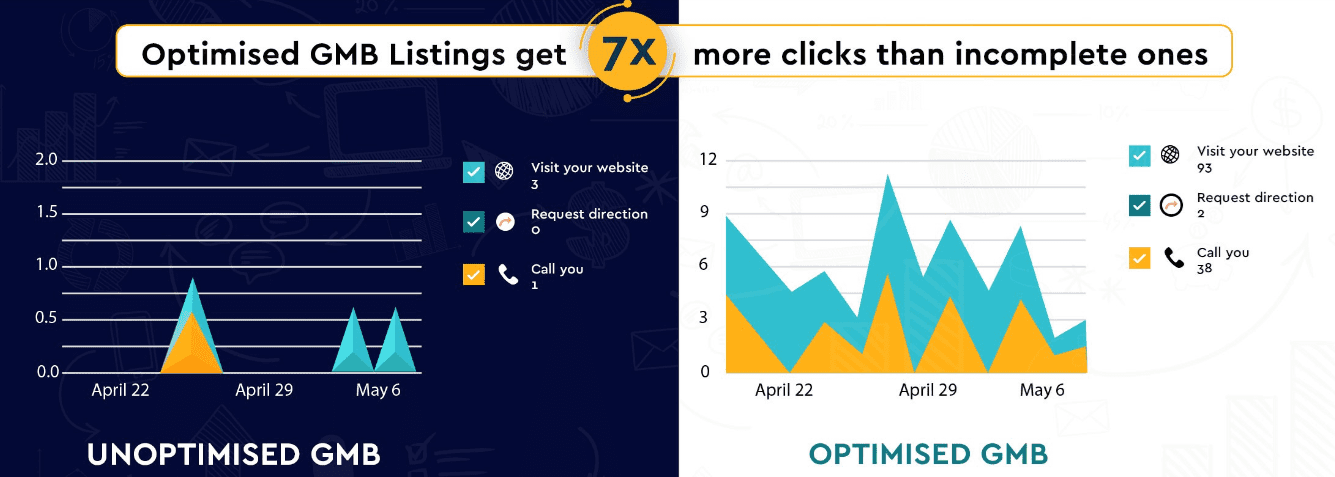
Source
37. On average, a local business gets over 1,200 views a month on its Google Business Profile, which means there’s a big chance to attract new customers.
38. Businesses with Google Business Profiles are 94% more likely to be seen as trustworthy. If you haven’t claimed your profile yet, now’s the time to do it.
39. Google Maps is where 70% of people look for nearby businesses, so being listed there is important.
40. Adding images to your Google Business Profile can boost website clicks by 35% compared to profiles without photos.
41. Data from Keywords Everywhere shows that “near me” searches have been steadily increasing over the past year, so this trend is likely to continue.

Google Ads Statistics
Since Google is the world’s top search engine, it’s no wonder so many marketers use Google Ads to promote their businesses.
With paid ads, you can control your growth by placing your business and products right in front of potential customers.
Instead of waiting for people to find you on their own, you can reach your target audience quickly and effectively.
Check out these key Google Ads stats to see just how valuable they can be.
42. According to the Global Search Network, about 63% people have clicked on a Google ad. This shows that running ads on Google can be effective in getting people to visit your website.
43. When people are looking to buy something, placing your ad on Google can give you an edge over your competitors. In fact, 65% of people click on these ads when they’re ready to make a purchase.
44. In 2024, the average click-through rate for Google Ads is 6.42%, and the average cost per click is $4.66. The average conversion rate for the same is 6.96%.
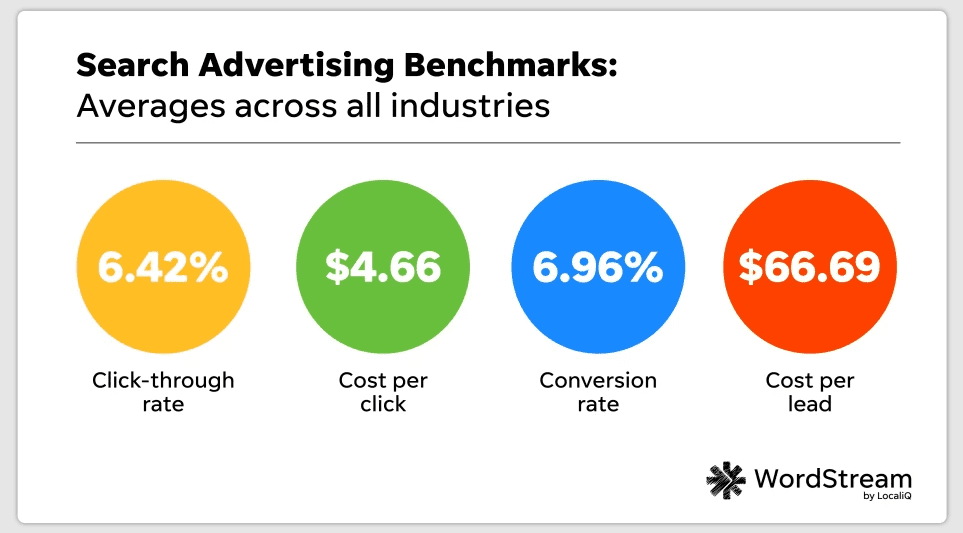
Source
45. Google says that for every $1 spent on their ads, businesses earn $8 in profit. This suggests a strong return on investment, which Google believes is a conservative estimate.
46. Google Shopping ads account for about 76.4% of retail search ad spending and generate 85.3% of all clicks on Adwords or Google Shopping campaigns.
47. Paid ads are up to five times more effective on mobile devices than desktop computers.
48. For those new to advertising, Google suggests starting with a daily ad budget between $10 and $50.
49. Brands usually spend between 12% and 30% of their monthly ad budget on managing Google Ads.
50. Manufacturing and industrial businesses spend the most on Google Ads, with an average of $7,689 monthly. Next up are real estate and home builders, who spend about $4,237 each month.
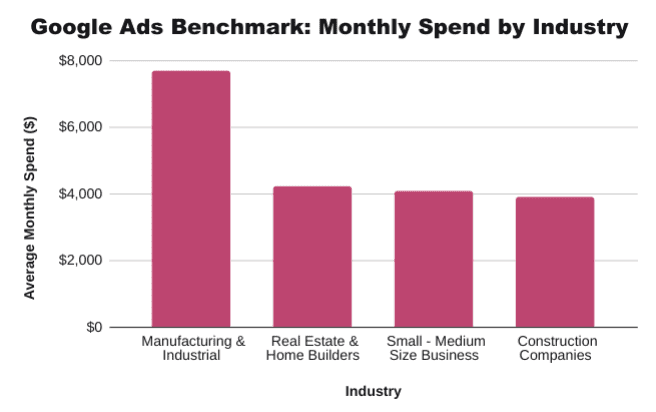
Source
Google Visual and Voice Search Statistics
Visual and voice searches are becoming crucial for SEO but often don’t get enough attention.
Visual search lets users find info using images, like searching for similar products from a photo. Voice search involves asking device questions, like finding nearby coffee shops by speaking.
These trends are growing fast, so let’s look at some Google stats to see why they’re important for your business.
51. Google Lens, a visual search tool that uses AI to identify objects and text in images, is incredibly popular with 12 billion searches every month. Since 2021, the number of searches with Google Lens has quadrupled.
52. Half of online shoppers say images help them decide what to buy, and people interact with 3D images nearly 50% more than with static ones.
53. The top devices for using voice assistants are smartphones (56%), smart speakers (35%), and TVs (34%).
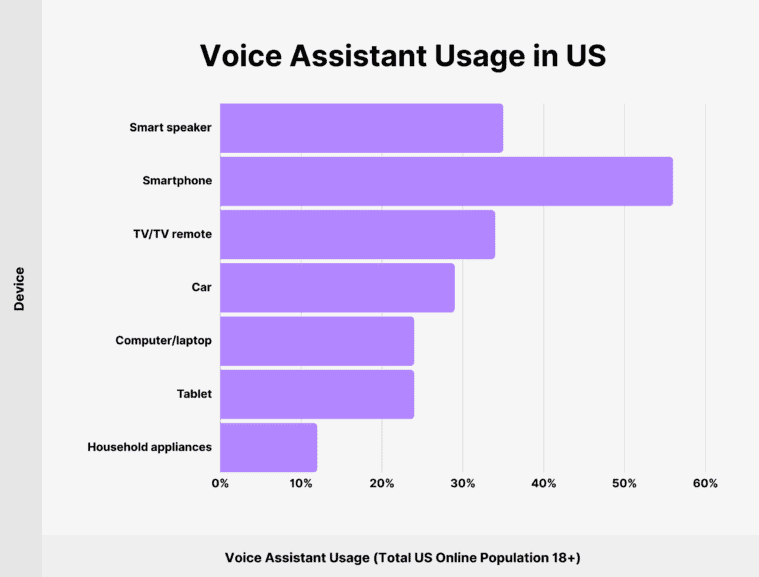
Source
54. In the US, 33.6% of internet users aged 16 to 64 use voice assistants every week. More men than women use these assistants regularly.
55. In 2024, around 86.1 million people in the US use smart speakers for voice searches, up from 80.2 million in 2022.
56. Among US Millennials, 61.9% use voice assistants on their smartphones at least once a month, followed by 55.2% of Gen Z and 51.9% of Gen X. Only 31.5% of Baby Boomers use voice assistants.

Source
57. Approximately 38.8 million people in the US use smart speakers for shopping activities, like researching or adding products to a cart, making up 13.6% of the population.
Conclusion
Google’s massive influence on how we search and shop is clear from these numbers. It’s handling billions of searches every minute and dominates both desktop and mobile searches. As consumer habits shift, visual and voice searches are also becoming increasingly important.
For anyone looking to stay ahead in the digital game, it’s key to keep up with these trends. Understanding how people use Google and adapting your strategies will help you meet their needs more effectively.
So keep an eye on these Google stats to make sure you’re always in tune with what’s happening in the world of search.


